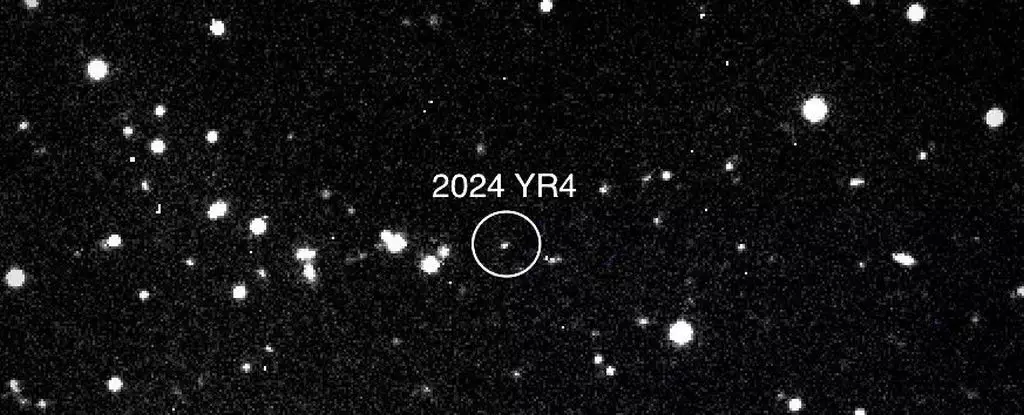Asteroids often loom like hidden specters in our cosmic backyard, ready to wreak havoc at any moment. With the latest buzz centered around asteroid 2024 YR4, it has become evident that the public’s concern over these space rocks is both warranted and fed by sensationalist narratives. This particular asteroid, the size of an office building, is not an immediate hazard to Earth, as its chances of collision hover at a minuscule 0.001 percent. But as they say, there’s no smoke without fire. The idea that such a formidable object could potentially make contact with our Moon raises questions—not just about the lunar landscape but about humanity’s ongoing mission to understand and predict celestial events.
Despite the reassurances from scientists that Earth is safe for now, the implications of a potential moon strike resonate unsettlingly. If 2024 YR4 does collide with the Moon in its next close approach in December 2032, could it affect not just our celestial neighbor but our very own planet? According to a recent report led by planetary astronomer Andrew Rivkin, the chances of YR4 impacting the Moon remain non-zero. This ambiguity adds a layer of anxiety that we can’t ignore. We may be safe, but we are walking a tightrope, perpetually teetering between safety and disaster.
The Science Behind the Panic: Understanding Asteroid Assessments
The very nature of asteroid tracking is riddled with uncertainties. 2024 YR4 was surprisingly discovered only a day after Christmas in 2024, causing immediate concern due to its orbit bringing it uncomfortably close to our planet. At one point, initial estimations of its impact physics shot up to a staggering 3.1 percent. Such figures, while they may sound small, are dauntingly significant in cosmic terms. This roller-coaster of dread highlights our very human instinct: we tend to focus on the worst-case scenario, seeking shadows in the possibilities.
Scientists have to juggle probabilities, figures, and an arsenal of observational tools to keep our minds at ease. The precision required in measuring this asteroid’s trajectory is both impressive and alarming; it seems like every advancement in space observation merely reveals how much more we ultimately have to learn. The upcoming JWST observations planned for May 2025 promise to narrow the odds and offer a clearer picture of YR4’s composition and behavior. Still, one can’t help but wonder—are we placing too much faith in our scientific predictions?
The Emotional Toll: Balancing Between Knowledge and Fear
Public sentiment regarding asteroids often oscillates between fascination and dread, and the case of 2024 YR4 is no exception. The figures suggest safety, yet our innate fear of the unforeseen looms larger than life. The ecological implications of an asteroid impact are not just numbers on a scientific report; they symbolize a vulnerability we hardly acknowledge, rooted deep within our psyche. The potential energy release of an impact—anywhere between 2 to 30 megatons of TNT—is nothing short of catastrophic, making one ponder how unprepared we are as a civilization.
Even if the odds of a disastrous collision have decreased significantly, the mere existence of 2024 YR4 demands attention and action. Conversations about planetary defenses need to transcend academia and spill into public discourse. Shouldn’t every citizen be aware of what might lie beyond our atmosphere? It’s not merely about watching the skies but about mobilizing resources for research and preparedness. The divide between scientific certainty and public fear must be bridged if we are to navigate our future safely.
As we fixate on the potential ramifications of asteroid 2024 YR4, there’s an undeniable lesson to be learned about our perception of space and risk. The very fact that a cosmic entity can disrupt our sense of security reflects a broader commentary on how we engage with unpredictability in our lives. Each revelation about YR4 feeds into a profound anxiety but also inspires a sense of wonder—about what lies beyond and how prepared we are to face the unknown together. Perhaps the most striking takeaway here is not just the situation surrounding one asteroid but how it reflects humanity’s ongoing battle with uncertainty.


Leave a Reply